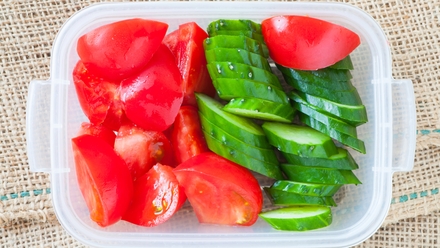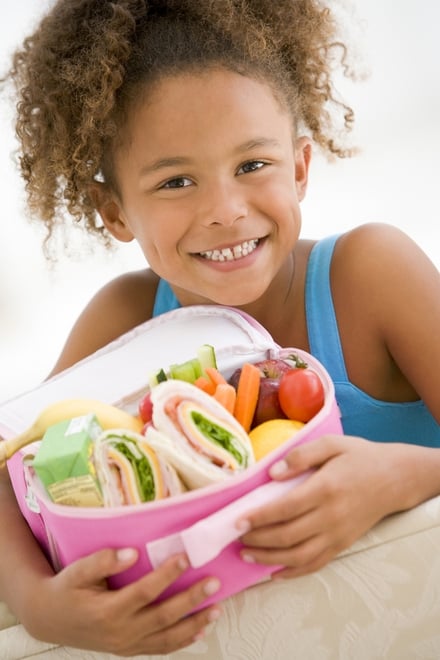It can be hard to think creatively, day in, day out when it comes to lunchboxes and we can fall into the same, repetitive routine – often relying on shop-bought options as staples, the old 'hang sandwiches'. We constantly worry about our children’s diets and beat ourselves up that we aren’t doing enough. But it doesn’t have to be this way! There are so many little tricks and tips to making lunch boxes fun and interesting, while still ticking the nutritional boxes.
With September and the first day of school fast approaching, we have put together our Top Lunch Box tips that will hopefully help ease this burden and inject some new-found vigour into what can be a thankless task.
 Go back to basics
Go back to basics
We don’t have to re-invent the wheel – using last night’s leftovers are a great way to reduce your efforts as well as waste. Potatoes can be whipped into a potato salad with some mayo and chives while pasta can be turned into a salad of tuna, sweet corn and olives – the options are endless! Left over steamed vegetables can be included with a condiment such as relish or chutney or included in sandwiches or diced into a cous-cous salad. Starting with a good lunch box with separate compartments can help remind you what to include. Think lean proteins, whole grains, healthy fats and fruits/veggies rather than turning to the default choice of bread.
Involve your child
Getting your child involved in choosing and preparing food for their lunch box is the key to success – getting them interested in food will go a long way and give
them the necessary skills they need to take them into adulthood. Simple things like asking them what they would like to see in their lunchboxes and then letting them help prepare it will get them excited about break time. Including a little surprise like a note or funny doodle will also give them a giggle and remind them their lunch was lovingly prepared.
 Avoid shop bought products
Avoid shop bought products
We’ve all seen the endless rows of options targeted at us in supermarkets – they often contain large amounts of sugar, salt and additives, with little nutritional value. Don’t be fooled by the marketing! With some imagination and a little effort, you can often recreate similar options yourself. Try filling little containers with cottage cheese or hummus, then including some oatcakes and vegetable batons for dunking. Using the same 'build it yourself' approach is useful in avoiding soggy sandwiches.
Try introducing new foods regularly
It can be frustrating when food is refused but it takes a lot of exposure and repetition for a child to decide whether or not they like a particular food. Persistence is the key! Finding foods that they like eating at home and trying to incorporate them into their lunchbox can be a good starting point. Often the way we package a food can be problematic – a whole apple may be returned untouched but a sliced apple could be gobbled up! Try alternating the sandwich material from wholegrain bread to bagels to wraps.
Use the freezer
Don’t be afraid to cook in bulk and freeze foods such as muffins, pancakes and flapjacks – then simply take out the night before to be included the next day. This ensures that your child gets variety during the week, without too much effort on your part. If mum and dad take lunches to work, they can avail of these tasty treats too.
Think outside of the box
For children who are fussy about vegetables, try different approaches such as grating them into fillings such as hummus and cream cheese or adding a dipping sauce such as tzatziki. Fun presentation helps – try using different shaped cookie cutters to enhance the look of sandwiches and fruits.

Maggie Carey has a BSc in Applied Science from Trinity College and is a qualified nutritionist, herbalist and naturopath. As a busy mum of two young children, she fully understands the need for quick but nutritious meals to fuel families and fight off infections.
She is passionate about the role of diet in both the prevention of disease and the promotion of well-being and spends a lot of her day in the kitchen trying out new recipes! Her specific areas of interest are infertility, weight loss and women's health.
Nutrition Division are a team of top nutritionists providing personalised and targeted nutrition to optimise health and wellbeing and prevent the onset of chronic disease.Based in Dublin City Centre, our registered nutritionists provide a wide range of services, from individual consultations to group courses and corporate events.
Nutrition Division, 29 Fitzwilliam St Upper, Dublin 2. T: 01-6629231 and you can visit them online here on www.nutritiondivision.ie or email here e: info@nutritiondivision.ie


